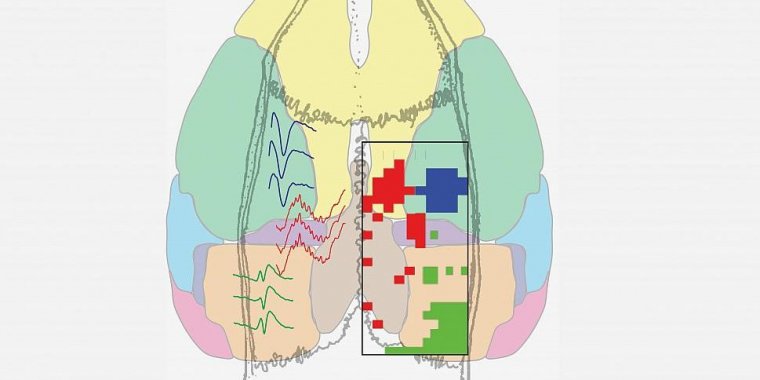| News / Science News |
Study shows how memories ripple through the brain
Using an innovative “NeuroGrid” technology, scientists showed that sleep boosts communication between two brain regions whose connection is critical for the formation of memories.

Research suggests that increased communication between two brain areas during sleep may play a role in memory formation. Image credit: György Buzsáki, M.D., Ph.D., NYU School of Medicine
A brain structure called the hippocampus is widely thought to turn new information into permanent memories while we sleep. A previous work revealed high-frequency bursts of neural firing called ripples in the hippocampus during sleep and suggested they play a role in memory storage.
The current study confirmed the presence of ripples in the hippocampus during sleep and found them in certain parts of association neocortex, an area on the brain’s surface involved in processing complex sensory information.
Using a cutting-edge NeuroGrid system they invented, along with recording electrodes placed deeper into the brain, the researchers examined activity in several parts of rats’ brains during non-rapid eye movement (NREM) sleep, the longest stage of sleep.
Their NeuroGrid consists of a collection of tiny electrodes linked together like the threads of a blanket, which is then laid across an area of the brain so that each electrode can continuously monitor the activity of a different set of neurons.
The team was also surprised to find that the ripples in the association neocortex and hippocampus occurred at the same time, suggesting the two regions were communicating as the rats slept. Because the association neocortex is thought to be a storage location for memories, the researchers theorized that this neural dialogue could help the brain retain information.
To test that idea, they examined brain activity during NREM sleep in rats trained to locate rewards in a maze and in rats that explored the maze in a random fashion. In the latter group of animals, the ripples in the hippocampus and cortex were no more synchronized before exploring the maze than afterwards.
In the trained rats, the learning task increased the cross-talk between those areas, and a second training session boosted it even more, further suggesting that such communication is important for the creation and storage of memories. (National Institutes of Health)
YOU MAY ALSO LIKE


